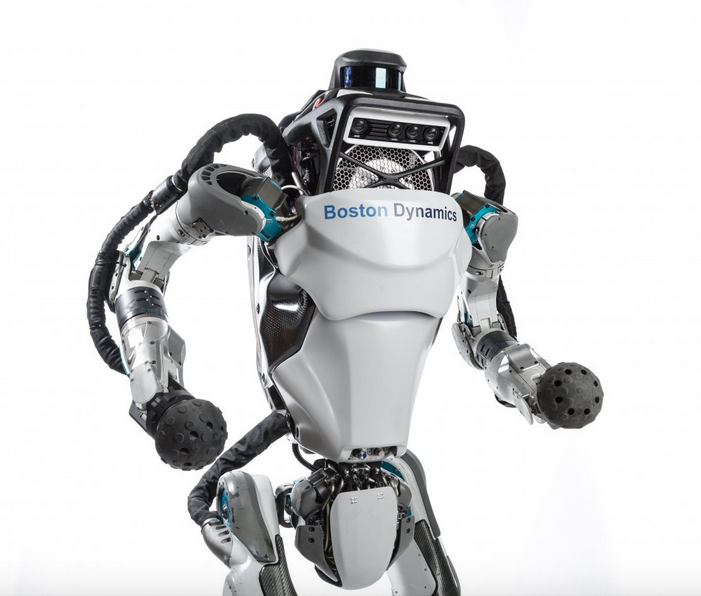C-3PO is Here ! Meet Boston Dynamics’ Atlas

Three years ago I posted about a robotic mastiff created by Boston Dynamics. Last November, the company showed that its humanoid robot ‘Atlas’ can do back flips and last week added to its repertoire by showing that now it can run. Not just walk, but run.
C-3PO is finally here. Wait, not even C-3PO could run or do back flips. Yes, yes, I know. Atlas is not demonstrating artificial intelligence in the form of holding conversations with humans. BUT, Boston Dynamics’ steady progress over the past several years is showing that robotic assistance in various forms is likely to become commonplace within the next few decades. Back in the days before drones were consumer electronic items, I frequently was called upon to explain the ‘good’ that drones could do. Remember that not so long ago everyone equated ‘drone’ with ‘spying’. I had to talk about the three D’s: airborne robots were excellent at doing work that was dull, dirty or dangerous (e.g., border patrol, search-and-rescue in a collapsed building, nuclear contamination clean-up, etc). Boston Dynamics’ creations will be needed for many such tasks.
There is cause to be concerned, however. The technology has not been invented that cannot be misused. This is not a near-term problem since the current robots are prohibitively expensive. That won’t last forever, though, and cyber-security will continue to be a matter of extreme importance.
For the moment, let’s just celebrate the marvelous engineering achievements that Boston Dynamics continues to make.
